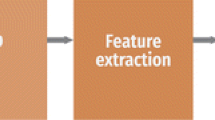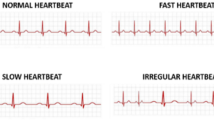Abstract
This paper represents the application on the fuzzy-hybrid neural network for electrocardiographic (ECG) beat recognition and classification. We proposed the approach to ECG beat recognition that is based on QRS complex classification. Instead of the original QRS waveform, we have used three different types of QRS features sets. The main objective of this work was to develop a technique which was less sensitive to the morphological variation of the QRS waveform. Linear predictive coefficients (LPC), third-order cumulant-based auto regressive coefficient (AR), and the variance of the wavelet transform detail coefficients of the isolated QRS complexes are used as the features. It will be shown that the wavelet transform based approach is better than the other techniques. The main properties of the proposed method are simplicity, moderate recognition rate, and fast computation time.
Similar content being viewed by others
References
Barro S, Fernandez-Delgado M, Villa-Sobrino JA, Regueiro CV, and Sanchez E. Classifying multichannel ECG patterns with an adaptive neural network. IEEE Eng Med Biol Mag17: 45-55, 1998.
Dickhaus H, and Heinrich H. Classifying biosignals with wavelet networks. IEEE Eng Med Biol Mag15: 103-111, 1996.
Haykin S. Neural Networks. A Comprehensive Foundation. New York: Mcmillan College, 1994.
Hinich MJ. Testing for gaussianity and linearity of a stationary time. Time Series Anal3: 169-176, 1982.
Hu YH, Palreddy S, and Tompkins W. A patient-adaptable ECG beat classifier using a mixture of experts approach. IEEE Trans Biomed Eng44: 891-900, 1997.
Hu YH, and Tompkins W. A real time QRS detection algorithm. IEEE Trans Biomed Eng32: 230-236, 1985.
Minami K, Nakajima H, and Toyoshima T. Real-time discrimination of ventricular tachyarrhytmia with Fourier-transform neural network. IEEE Trans Biomed Eng46: 179-185, 1999.
Nikias C, and Petropulu A. Higher Order Spectral Analysis. Englewood Cliffs, NJ: Prentice-Hall, 1993.
Oien GE, Bertelsen NA, Eftestol T, and Husoy JH. ECG rhythm classification using artificial neural networks. In Proceedings of the IEEE Digital Signal Processing Workshop, 1996, pp. 514-517.
Osowski S, and Linh TH. 'ECG beat recognition using fuzzy hybrid neural network. IEEE Trans Biomed Eng48: 1265-1271, 2001.
Wang Li-Xin. A Course in Fuzzy Systems and Control. Englewood Cliffs NJ: Prentice-Hall, pp. 347-350.
Author information
Authors and Affiliations
Rights and permissions
About this article
Cite this article
Engin, M., Demirağ, S. Fuzzy-Hybrid Neural Network Based ECG Beat Recognition Using Three Different Types of Feature Sets. Cardiovascular Engineering 3, 71–80 (2003). https://doi.org/10.1023/A:1025515632674
Issue Date:
DOI: https://doi.org/10.1023/A:1025515632674




